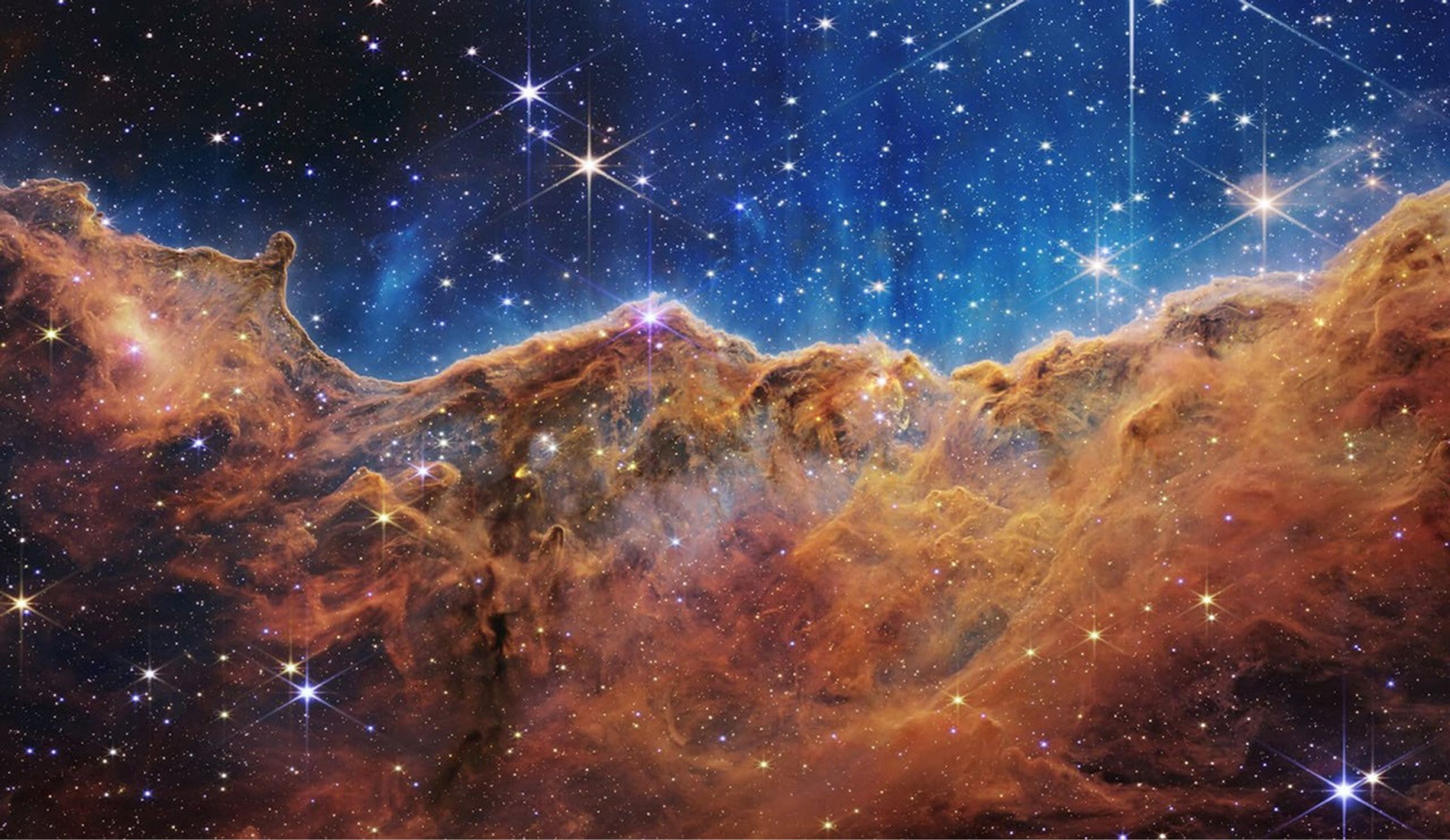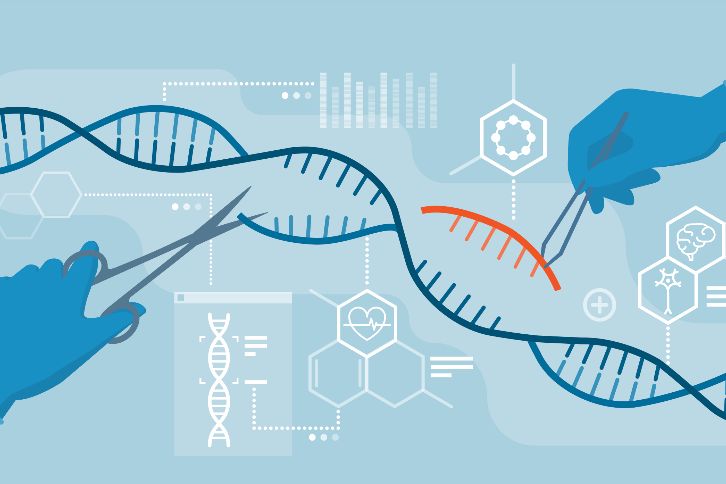By Victoria Hristova, Year 12
You may have heard the poetic saying that we, and every living thing on Earth, are made of stardust… in other words, dead stars. Although that may sound far-fetched, there is some truth to it. Around 380’000 years after the Big Bang, the birth of the Universe, hydrogen and helium isotopes assembled from the cooling proton-electron-neutron primordial soup that was the Universe up until that point. And there was only that in the expanding vastness of the cosmos. So where did we, specifically the carbon in our bodies and the rest of the elements, come from?
We begin our journey at the heart of molecular clouds, made up of said hydrogen and helium atoms. Due to their very low temperatures, the gas within begins to clump, creating high-density pockets whose gravitational force increases as they get larger. Eventually, the gas pockets “collapse” in on themselves, and the friction between the particles generates heat. As more matter is pulled in, a hot white ball forms, its gravity keeping it intact. And with that, a protostar is born.
At the core of the protostar, nuclear fusion takes place, slowly converting the star’s reserve of hydrogen into helium. At this point, the star is said to be in its main sequence, during which the outward force created by the energy released from fusion is equal to the force of gravity pushing inward. This is called hydrostatic equilibrium.
But what happens once the star runs out of hydrogen? Any star, regardless of its type and journey through the main sequence, will end up forming new, heavier elements in its core. It begins with the collapse of the core since fusion is no longer taking place and subsequently does not produce energy to counterbalance the push of gravity. However, by contracting the core, temperature, and pressure within the rise, the outer layers expand and fuse into denser elements to resume. From here on, there are a couple of paths:
A low-mass star such as our Sun’s atmosphere will keep growing and periodically pulsating while the helium in the core fuses into carbon. Over time, the star will lose its outer layers, leaving an enormous gas cloud encircling the cooling core, now a white dwarf. From that dust and gas cloud, called a planetary nebula, stars, and planets will be reborn. (Image credit: M27 planetary nebula, Group “Huygens,” Summer School on Space and Earth Sciences “Prof. Marin Bachevarov” 2023, Dep. of Astronomy, University of Sofia “St. Kliment Ohridksi”)
For a higher mass star, the fusion continues into heavier elements, such as oxygen, neon, and magnesium, and continues to silicon and finally iron for the most massive stars. Fusion into heavier elements requires energy rather than releasing it, which is why no element heavier than iron can be created in a star’s core. When the core of those stars, 10 M☉ (solar masses) and above, collapses yet again, a huge shockwave is released, expelling all the outer layers and leaving either a neutron star or a black hole in place of the star, commonly known as a supernova. It is during this event, in the few split seconds of unimaginably high temperature, that nucleosynthesis, the spontaneous adding of neutrons to a nucleus, happens. The new atoms, containing too many neutrons, have now become unstable and decay, and it is the momentary release of energy that forms new elements. (Image credit: Cassiopeia A supernova, captured by the Fermi Gamma-ray Space Telescope, Chandra X-ray Observatory, Hubble Space Telescope, Spitzer Space Telescope, Very Large Array, NASA)
The matter expelled by both endings will be scattered in the vastness of space, enriching with new elements, the future molecular clouds that will birth new stars and planets, repeating the cycle of creation and destruction over and over again.
And here we are, almost 13.7 billion years after the formation of the very first atoms. Imagine all the stars the atoms in your body have been in; imagine all the millions of light-years they must’ve traveled to reach this particular place in space and time; imagine what the chances are that all these atoms bonded in the perfect sequence to form consciousness. It certainly makes one feel grand, eternal, in the expanse of our ever-growing Universe. Food for thought, isn’t it?
Cover image: Veil Nebula, supernova remnant, located in the constellation Cygnus, as captured by the Hubble Space Telescope, NASA



